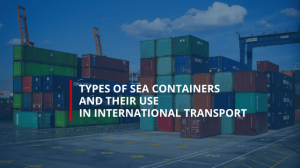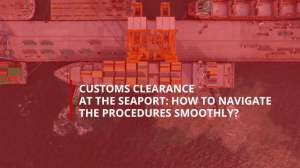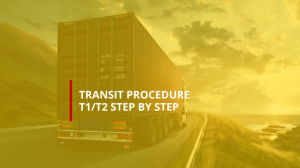

03/03/2025
What is a transit procedure? key rules and benefits for businesses
what is a transit procedure? key rules and benefits for businesses
The transit procedure is a set of regulations setting out the rules for transit transport. In the following article, we will take a closer look at its provisions and discuss the key issues related to this process.
What is transit?
Transit is a customs procedure under which customs duties and taxes are suspended for the duration of the procedure. The legal principles of transit are governed by the Common Transit Procedure, resulting from the Convention on a Common Transit Procedure of 20 May 1987. This document defines the rules for the carriage of goods between the countries of the European Union and countries such as Switzerland, Norway, Liechtenstein, Turkey, Serbia, Macedonia and Iceland.
Transit between the above-mentioned countries is handled by means of an electronic system which allows the preparation of transit declarations. The procedure begins at the customs office of departure and ends at the customs office of destination, where the carrier presents the goods together with the transit declaration.
Types of transit procedure
T1 – what does it consist of?
The external Community transit procedure (T1) concerns the transport of goods from outside the Community. It allows customs duties and formalities to be suspended within the EU and EFTA. The T1 procedure begins at the office of departure, where the transit declaration is lodged in electronic form. Paper declarations are accepted in the event of system failure. Once the document has been verified and an MRN assigned, the goods can be transported to the office of destination.
T2 – what does it consist of?
The internal Community Transit (T2) procedure covers the transport of goods whose origin and destination are in the EU but which pass through one or more EFTA countries. It does not apply to transport by sea or air. The T2 procedure works in the same way as T1, except that it applies to EU goods.
Flow of the T1/T2 procedure
1. Initial stage – Office of departure
The T1/T2 procedure begins at the office of departure, where the transit declaration is lodged electronically (paper-based transit declarations are permitted in exceptional cases). Once it has been analysed, the system automatically validates the document and assigns an MRN number to identify it. The office carries out an examination of the goods and, once this is completed, generates a transit document (T1 or T2) and a list of items which can form the basis for the final transport document.
At this time, the office of departure shall send a notification to the office of destination announcing the arrival of the goods. If the transport passes through an office of transit, the relevant notification also goes to this point.
2. Final stage – Customs office of destination
At the office of destination, the carrier presents the goods with a T1 or T2 document. The customs office, having advance information on the transport, determines the extent of the control. On completion, it returns the data to the office of departure, closing the transit operation. If irregularities are detected, the relevant information is noted on the report.
Who is responsible for carrying out the transit procedure?
The principal, i.e. the trader, is responsible for the proper conduct of the procedure. Amongst other things, he is obliged to lodge a guarantee to cover customs duties suspended during transit. This may take the form of cash (single guarantee) or a guarantee from a financial institution (comprehensive guarantee).
Charges and benefits under the transit procedure
The transit procedure avoids the immediate payment of customs and tax duties, which improves the liquidity of businesses. In addition, it allows goods to move smoothly across borders, eliminating the need for multiple customs declarations.
Transit-related costs include customs security fees, customs agency services and potential handling fees at customs offices. Choosing the right security (single or blanket) can reduce these costs.
Summary
The T1 and T2 transit procedure is a complex process, requiring knowledge of the regulations and the relevant formalities. Our agency can make the whole process significantly easier by supporting clients with the formalities at the customs offices of departure and destination. Thanks to our knowledge and experience, we guarantee fast and smooth processing of transit documents.
DO YOU NEED TRANSIT SPECIALISTS?
CONTACT OUR CUSTOMS AGENCY BOBROWNIKI NOW
ac.bobrowniki@pkscargo.pl
+48669300196
ac.bobrowniki@pkscargo.pl
+48669300196





